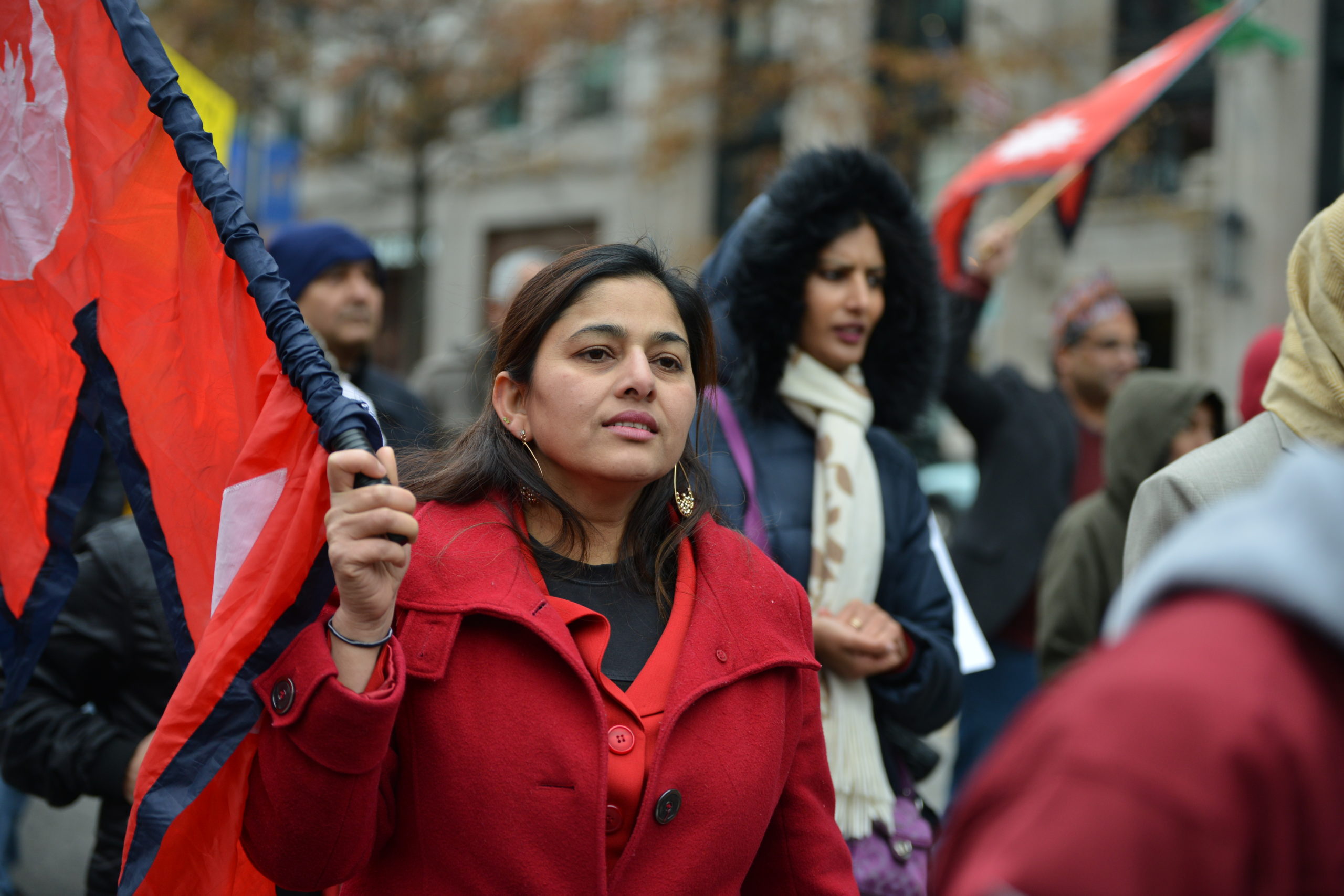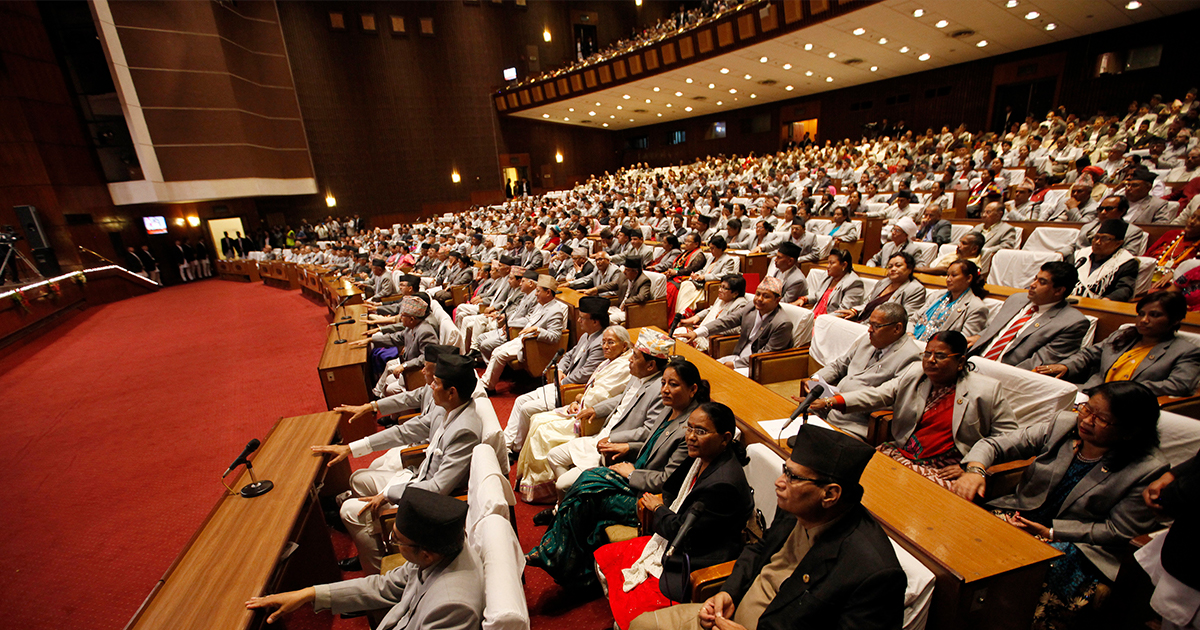PEACEBUILDING LESSONS # 1: Nepal
November marks fifteen years since the Nepal Peace Agreement was signed. We reflect on the anniversary in this first instalment in our series of inclusive peacebuilding lessons.
This peacebuilding lesson is based on our case study on women’s participation in Nepal’s constitution-making process 2008-2012. In this lesson we break down two key strategies that Nepali women’s groups applied to advance inclusion in the process.
STRATEGY 1: introduce a quota
APPROACH: target/effect policies and policy makers to influence direct decision-making
PROBLEM/BACKGROUND: Historic and deep-seated gender inequalities led to women having never comprised more than six percent of Nepal’s parliamentarians until 2007.
MOTIVATION: Pushing for progressive inclusion mechanisms in a peace process can help to jump-start and institutionalize more inclusive governance beyond the peace process itself.
OUTCOME: The quota ensured that women made up 33 percent of the members of the Constituent Assembly. The Constituent Assembly was the most representative body of its kind in Nepal’s history in terms of gender, caste, and minority inclusion and provided a critical juncture to shifting some of these structural barriers. This precedent set by the peace process has created momentum and attention to permanently enshrine inclusion, including in relation to women’s participation in governance. The new Constitution passed in 2015 has ensured a 33 percent representation of women in national and state Parliaments and 40 percent in local legislatures.
THREE KEY TAKEAWAYS: In relation to this strategy, here are some lessons learned – both positive and less positive – that can be applied by or relevant for peacebuilders in other contexts and peace processes.
- Identify the right allies: It is key to identify those actors who are well-placed to help achieve your objective by leveraging their position or influence. In this example, if the objective is to establish a quota in governance mechanisms, who in the parliamentarian landscape is strategically wise to approach to introduce the quota strategy? Peacebuilders should also consider if there are any external/non-governmental organisations you can bring in to support your initiative. Likewise peacebuilders should consider if there are women politicians and peacebuilding practitioners available that would be suitable for positions within the political system and if these could be mobilised to push for a quota.
- Back up with evidence: When you have identified which parliamentarians, external/non-governmental organisations and women politicians or peacebuilders to approach, consider what evidence can you bring forth to support the effectiveness of a quota in general and for your specific situation.
- Consider protection issues: As many as 70 percent of all women Constituent Assembly members in Nepal were confronted with some form of violence. Women also faced legal action due to their political involvement, and routinely struggled with men politicians’ negative attitudes towards them. Knowing this it is important to consider what measures need to be taken to ensure that women’s participation and uptake in political decision-making bodies does not result in additional safety risks and violence towards the women after the quota has been introduced.

STRATEGY 2: mass action
APPROACH: mobilise civil society and create spaces for influencing indirect decision-making by targeting delegations instead of mediators
PROBLEM/BACKGROUND: In many peace processes, civil society advocacy exclusively focuses on the mediating or convening entity, roles sometimes played by the UN or the AU, for example. However, targeting the mediator or convenor may lead to some gains in terms of inclusion in the process, but are often limited in their ability to influence and change behaviour of the conflict or negotiating parties themselves.
MOTIVATION: mass action can lead to direct political representation at the negotiation table, and beyond the negotiation process itself
OUTCOME: By targeting delegations, mass action in Nepal led to direct representation at the negotiation table which in turn carried over into the Constituent Assembly. This did not simply involve public advocacy and mass action, as women’s groups strategically engaged with the 23 parties to prepare lists of potential female candidates.
THREE KEY TAKEAWAYS: In relation to this strategy, here are some lessons learned – both positive and less positive – that can be applied by or relevant for peacebuilders in other contexts and peace processes.
- Think seriously about communication: Identify delegations and individuals to address and create a system for sustainable, long-term communication and think about how this communication will be most effective. Consider channels, length, frequency, engaged members, women group representatives etc.
- Identify political allies: Consider how you can create ties with political relations which influence and penetrate indirect decision-making (these are often still male and elite-driven even after the inclusion of women in decision-making bodies). These allies will help you further in mobilising mass action.
- Focus on meaningful inclusion: In order to engage as many women’s groups as possible, think about how to advance past paternalistic or crony politics where most of the women in politics are there by virtue of their family relations and undermines the ability to pursue a common and distinct agenda for women in a particular country. Sure, such individuals may be well-placed as champions to help advance the broader cause, but one needs to be clear-eyed and continuously seek to broaden the definition of inclusion. Set a strategy for cultivating and managing a meaningful inclusion agenda and preventing cosmetic and superficial inclusion.
Infographic,
Infographic: Women’s role in Nepal’s constitution-making process (2008–2012)
This infographic analyses women’s influence in Nepal’s First Constituent Assembly (2008-2012).
June 2018IPTI,
Case Study,
Women in Peace and Transition Processes: Nepal (2008–2012)
This case study analyses women’s influence women in Nepal’s First Constituent Assembly (2008-2012).
July 2017Estefanía Charvet,


